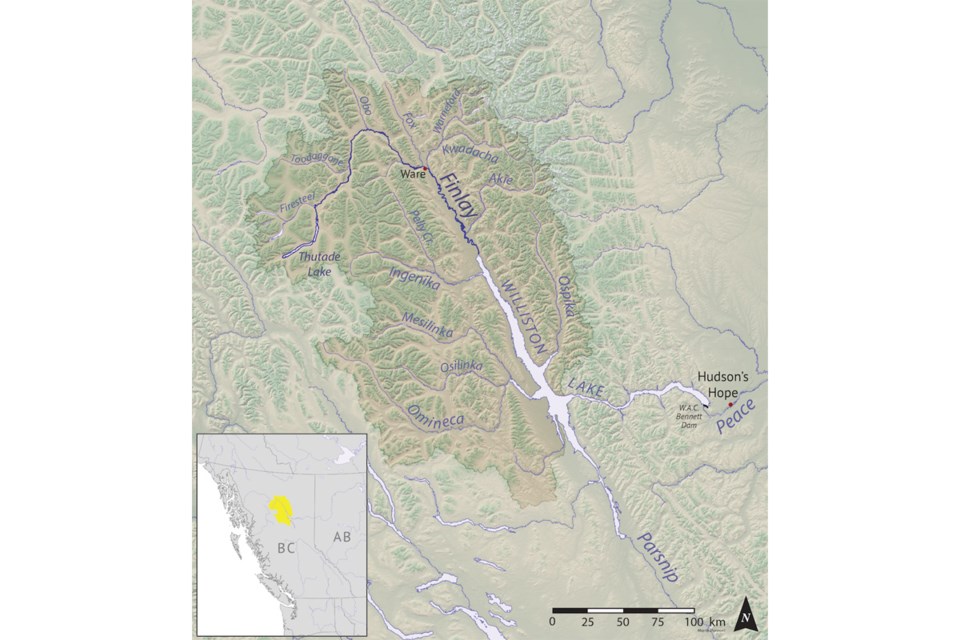UNBC researcher Daniel Sims remembers his grandfather telling him about a huge steam-tractor wheel rusting on the side of the Omineca River, and wondering who owned it and how it got there.
Sims, a UNBC associate professor of First Nations Studies, is the head of a research project which might be able provide some answers.
Sims and his research partners Tyler McCreary and Nicole Wheele received a five-year federal grant for roughly $400,000 to study the history of failed economic developments, and concepts of wilderness, in the watersheds of the Finlay and Parsnip rivers.
Williston Lake, the reservoir flooded to provide water to the WAC Bennet Dam, is at the heart of the area, Sims said.
“There was extensive homesteading. There was that attempt to turn the area into an agricultural area,” Sims said. “There was a lot of mining, a lot of forestry as well. There are (mineral) deposits that are still of interest to miners today.”
A lot of the projects did go ahead, but ultimately didn’t succeed, he said. The cost of transporting equipment to the area, and getting goods to market may have been one of the biggest hurdles for the projects to overcome.
Sims did a lot of his preliminary research for the project by scrolling through the online archives of the Prince George Citizen.
Between the 1870s and the late 1950s, there were cycles of investment as settlers looked to “tame the wilderness,” only to give up and have the wilderness reclaim the land, he said. One of the things the project will look at the idea of “wilderness” as a pristine and untouched place, something which barely exists in the modern world.
The area around Germansen Landing might look like pristine wilderness, but all around it is “evidence of hydraulic mining.”
“We as a species blasted huge chunks out of the river side, looking for gold,” Sims said.
Sims said the hope is the project will record the history of the region, including the first-hand accounts of Tsek’ehne Elders from Kwadacha, Tsay Keh Dene, and McLeod Lake, and the impact the failed economic development had on the people living there.
“A lot of Elders were around these projects and worked on them,” he said.
Sims, McCreary and Wheele will engage with communities in the area, and some of their students will also have a chance to take part in the research project over the five years.



